A silhouette in a Romantic landscape, c. 1845-1850
10 x 19 cm
Charcoal, watercolor and gouache on paper
Signed lower right “Louis Marvy”
Framed, under glass
Dimensions with frame: 25 x 35 cm
Very good condition
* * *
At the heart of the Romantic period, nothing more poetic than the silhouette of a woman alone at the edge of a pond. She moves away in silence and the artist captures this moment in the quickness of watercolor, as if to capture the last instant of this apparition.
A talented engraver and illustrator, collaborator of the magazine l'Artiste for about 10 years, Louis Marvy (1815-1850) worked to promote the Romantic aesthetic and the new generation of landscape painters by reproducing in particular the works of Jules Dupré, Théodore Rousseau, Decamps and Narcisse Diaz de la Peña. In contact with poets and painters, working in Paris but traveling frequently to London, his art was enriched through the encounters and projects to which he devoted his energy and talent, until his death at only 36 years old.
From the 1840s, Louis Marvy distinguished himself in particular for having reproduced, in the magazine l'Artiste, several etchings by Rembrandt, thus participating in the dissemination and therefore the rediscovery of the work of the great master, thanks to a publication accessible to all. There is no doubt that Louis Marvy was himself also fascinated by Rembrandt, and his reproduction work enriched his inspiration and his practice of graphic arts.
Another source of inspiration, certainly fascinating, in 1847, at the invitation of Victor Hugo, Louis Marvy was commissioned to engrave 4 original drawings of the poet: the corresponding prints are today preserved at Hauteville House (see photo). In contact with such masters, Marvy learned the economy of means, the taste for the sublime blending with the everyday, which we find in this work on paper, signed by his hand.
This composition, which could not be more romantic, is skillfully guided by work on the reserve of the ochre paper, then a charcoal drawing, for the trees and the edges of the pond, and then the broader movement of the watercolor, for the sky, the water and the wind.
This original drawing finds a very interesting echo in the series of 10 engravings that Louis Marvy executed, during the 1840s, after the works of the English artist Carolina Courtenay Boyle (1803-1883), maid of honor to Queen Adelaide of Saxe-Meiningen. As is often the case, the absolutely precious source of information that is the British Museum helps us to shed light on this moment in the artist's career (see photos). We discover a series of engravings where silhouettes travel, in the distance, through sublime landscapes, imaginary or from nature.
Our watercolor explores this same aesthetic, adding the vibration of a few touches of perfectly balanced colors, with this irresistible detail, in gouache: this dot of red in the dress and its reflection in the water.


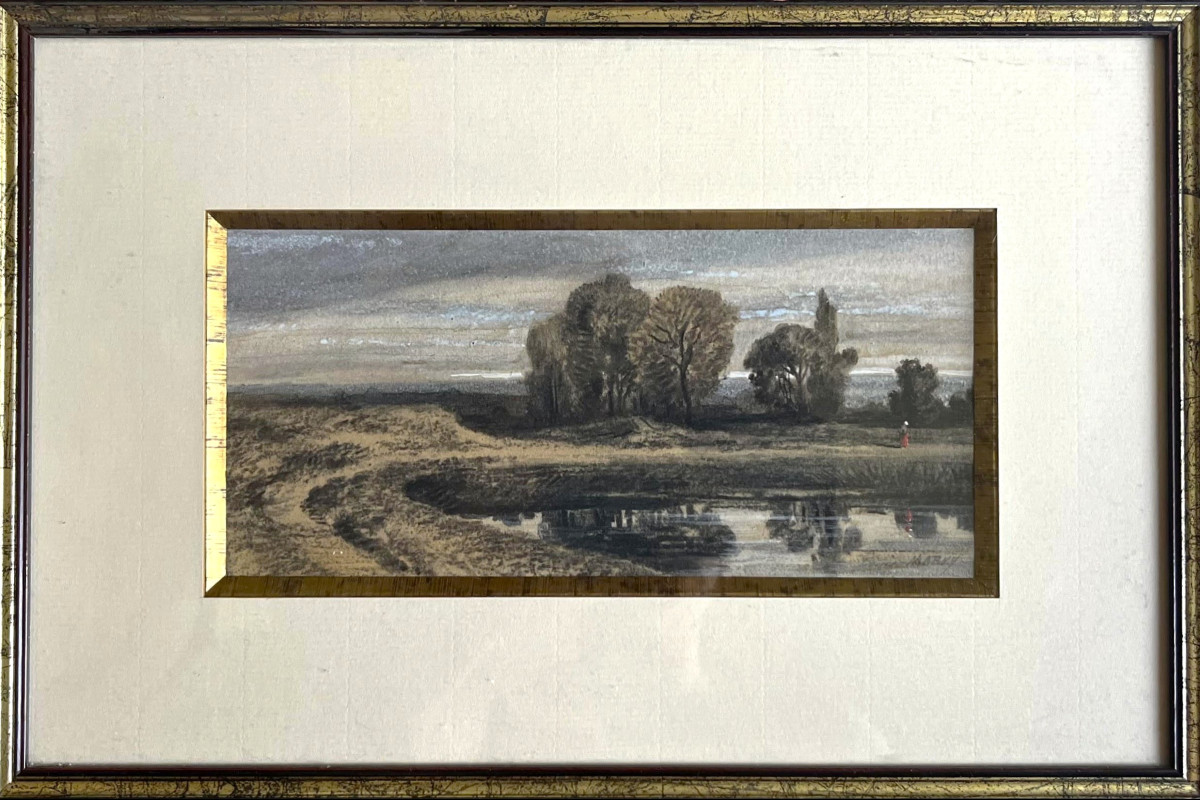

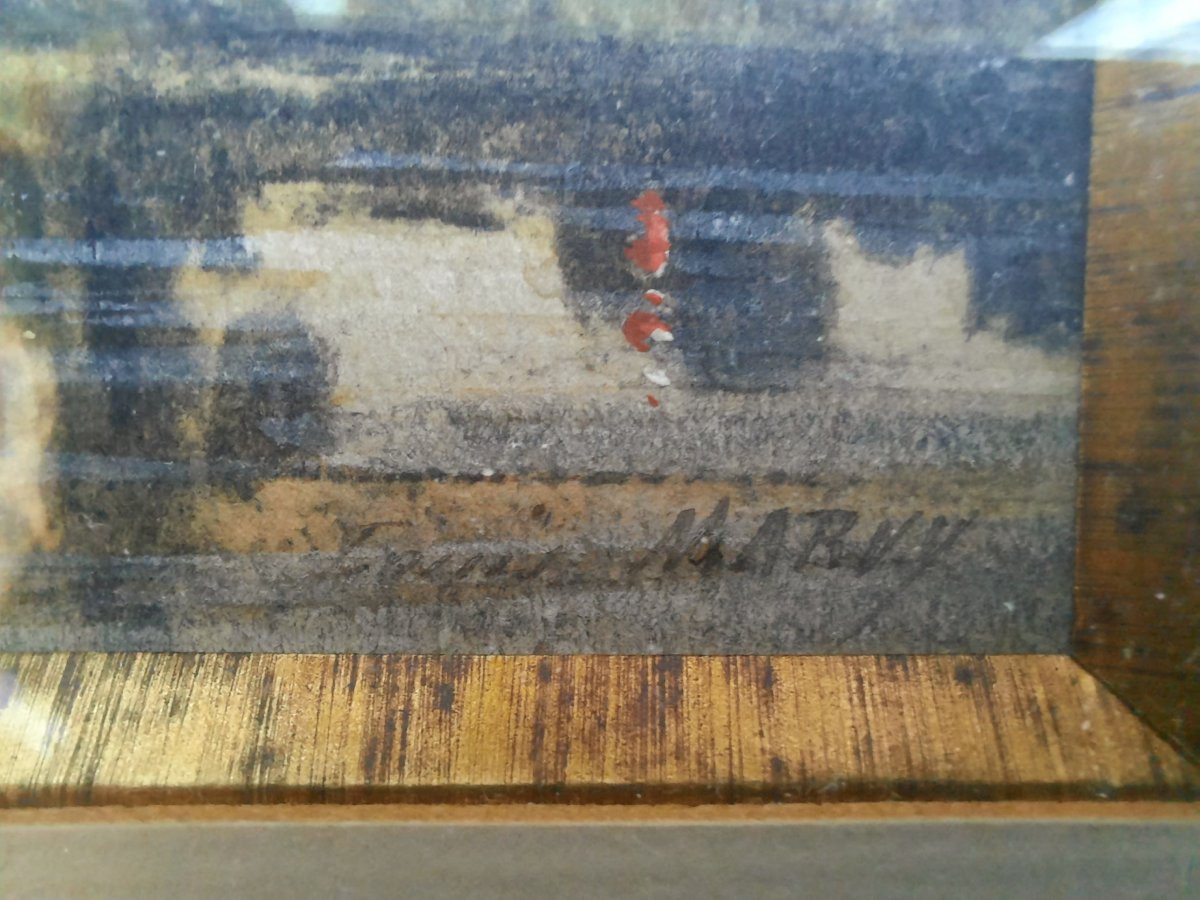
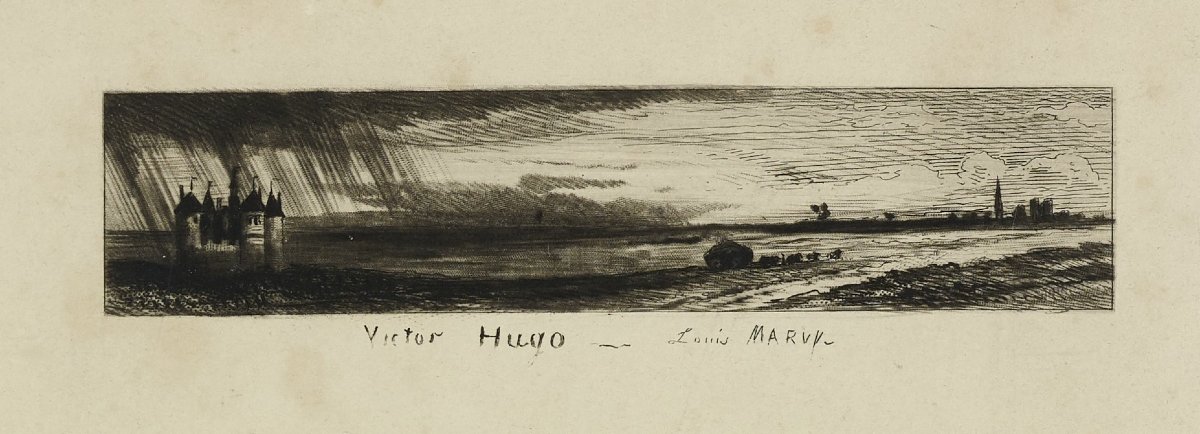

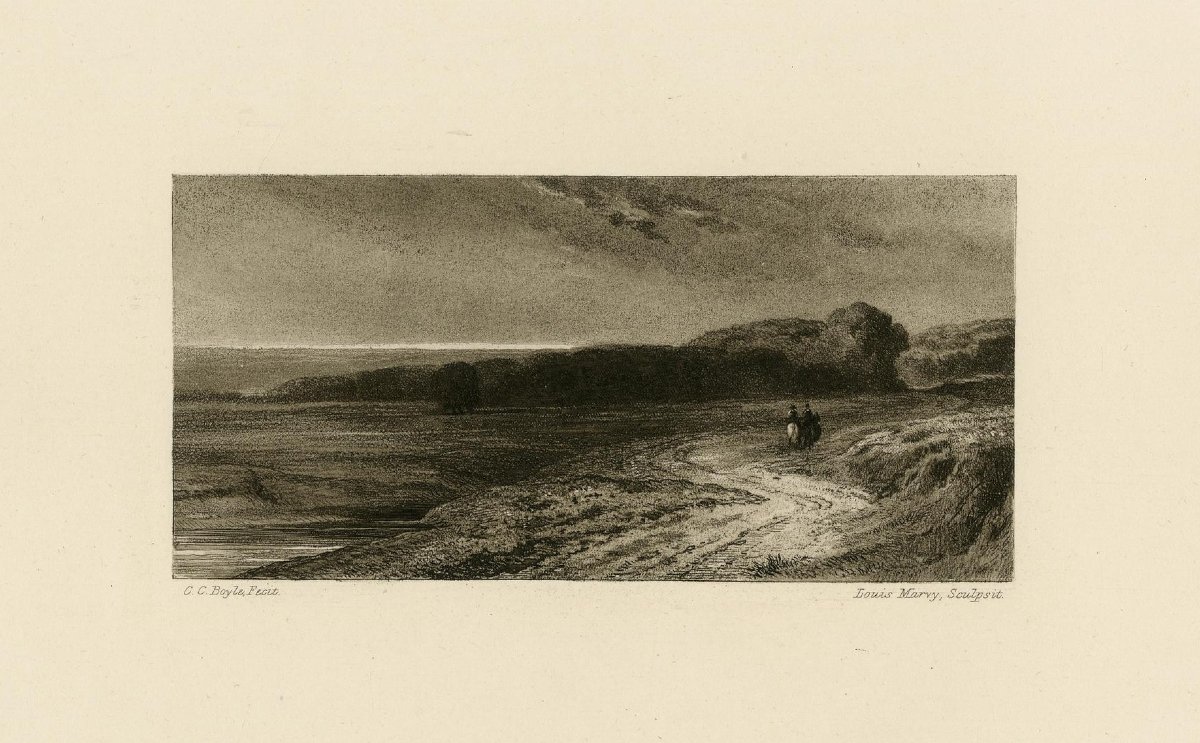












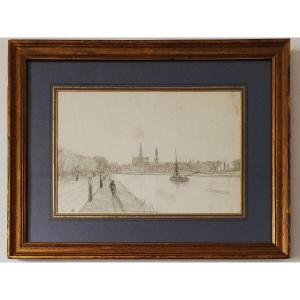
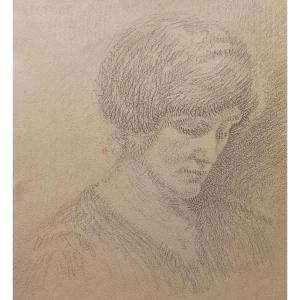



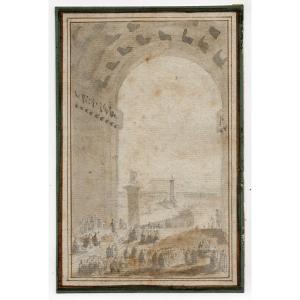
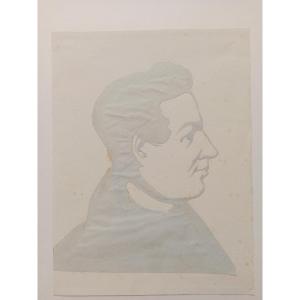

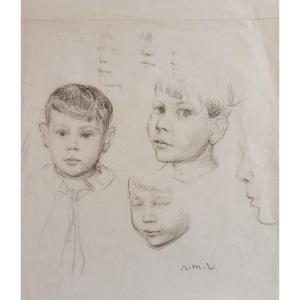

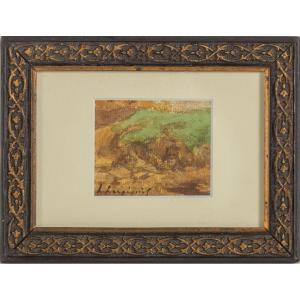








 Le Magazine de PROANTIC
Le Magazine de PROANTIC TRÉSORS Magazine
TRÉSORS Magazine Rivista Artiquariato
Rivista Artiquariato